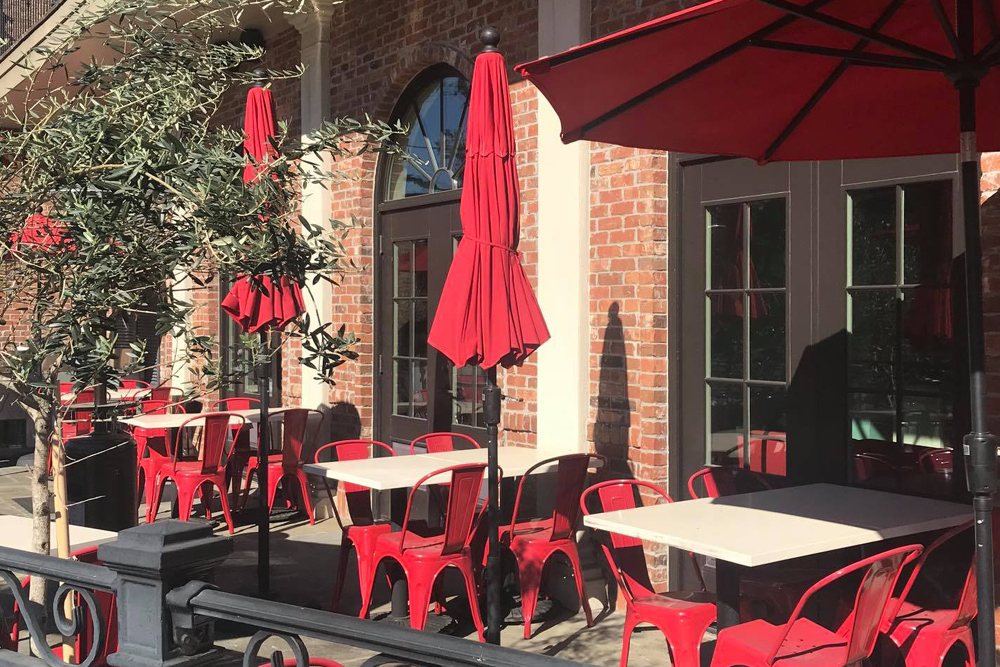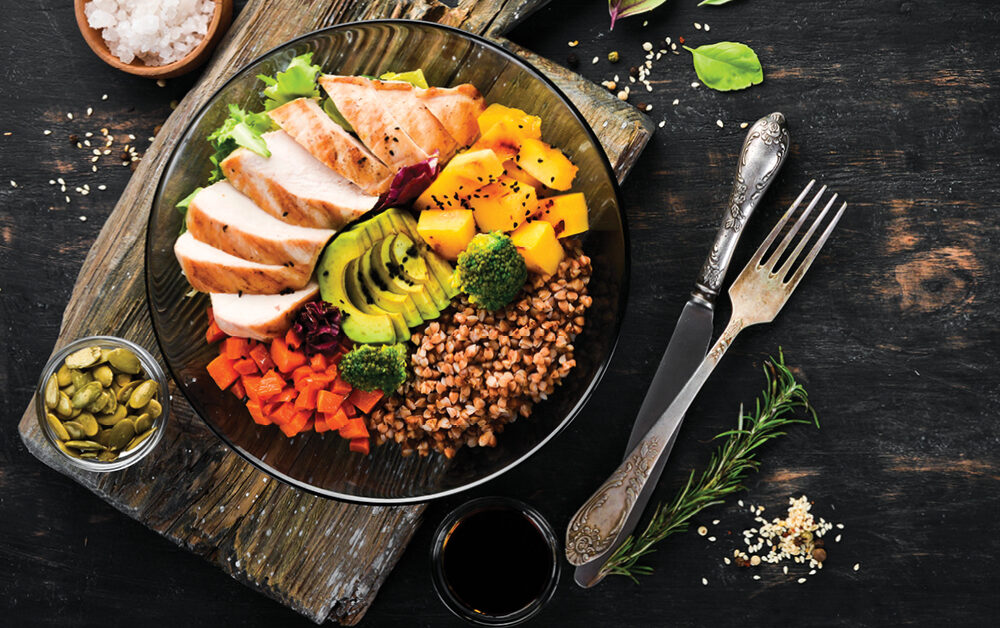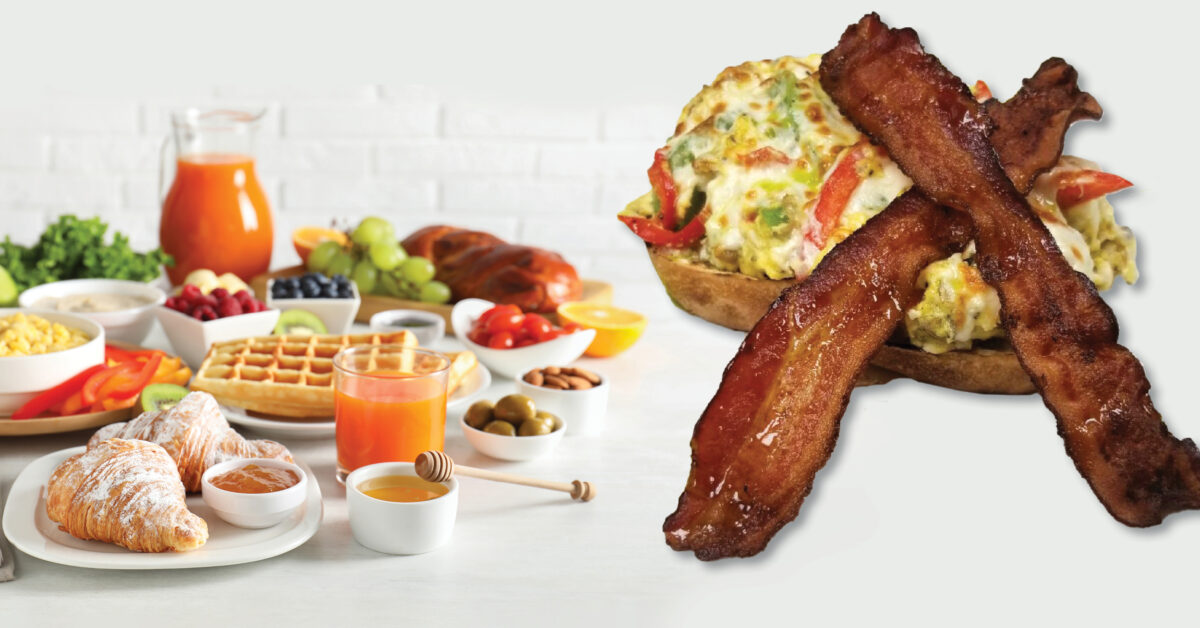
Spotlight on Black-Owned Businesses in SWLA
February 2022
Recovery Spotlight – 1910
February 20222022 Food, Drink & Restaurant Trends
by Angie Kay Dilmore
We humans eat for a variety of reasons. Of course, we eat to survive, but we also eat for the pleasure of food flavors and textures. We often eat when we gather and socialize. Too often, we eat in response to stress or boredom. The variable becomes WHAT we eat, and that can change course over a lifetime. Most anyone can recall a food they disliked as a child, and now they love (or at least like) that same food. Take Brussels sprouts, for example. Just sayin’.
Our culture plays a major role in what we eat. We tend to eat and enjoy the foods our parents fed us in our youth. Eating for good health became more of a focus around the 1980s, but every decade seems to have its own version of what that looks like. In Southwest Louisiana, 2020 ushered in a pandemic era followed by a series of federally declared natural disasters, resulting in major stress that has prompted us to crave comfort foods.
The consequences of COVID-19 on the food industry continue, with shortages due to supply chain disruptions and staffing issues causing higher food prices. Whether for health concerns, taste preferences, food costs or availability, this special section gives an overview of what we might expect to see this year when we purchase food, both in restaurants and grocery stores.
Restaurant Trends
Few businesses have felt the fury of the pandemic and the storms quite like the SWLA restaurant industry. Starting with COVID-prompted closures, cautious re-openings with takeout only, storm damages and rebuilding obstacles, staffing shortages, food scarcities, rising staff and supply costs . . . numerous establishments will never return. The ones that have survived now need to rethink the way they do most everything.
Some restaurants have opted to open fewer hours and fewer days per week. This is not strictly a staffing concern but also an intentional focus on the mental health and well-being of the management and staff. Higher menu prices will continue due to weather issues, importing difficulties, higher labor and product prices.
Patrons may discover fewer items on menus as owners and chefs make do with what supplies they can find and afford. We’ll see a greater farm-to-table concept driven by global supply chain disruptions and an increased focus on reducing carbon footprint for climate change.
Local businessman Ben Herrera owns three of Lake Charles’ most popular dining establishments – 121 Artisan Bistro, Calla, and The James 710. He expects chefs will use what’s available with more efficiency and imagination. “I think we’ll see a shift in chefs getting creative with more affordable ingredients in order to create great dishes. Typical products like crab, snapper and other fish, beef tenderloins and rib eyes – the prices of those products are going through the roof! We’ll see chefs using alternative cuts of beef, more pork, lamb shanks instead of lollipops.”
Beverage Trends
The popularity of fruit and tea-based spiked seltzers – from companies like Truly, White Claw, Wild Basin, even Bud Light Seltzer – has been on a steep upward trajectory since early in the pandemic, expecting $4.7 billion in sales by this month.
When going out for cocktails, Herrera says imbibers are looking for the WOW factor; something creative, innovative, and visually stunning that they’ve never had before. “High end bourbons continue to be strong,” he adds. “People are moving away from Old Fashioneds to skipping the mixers and sipping a nice bourbon or whiskey neat or on the rocks.” Herrera also says high-end tequilas and mescals are dramatically on the rise, and craft beers continue to trend, especially IPAs.
Non-alcoholic beverages continue to evolve as mocktails and non-alcoholic beers become more sophisticated. There’s a definite trend toward less alcohol consumption, especially among millennials and Gen Z-ers, and as evidenced by the “drysolation” and “Dry-January” movements.
Carbonated beverages aren’t generally known for their health benefits—at best there’s benign seltzer, at worst, sugary soda—but there’s another category emerging. Fizzy “functional beverages” include brands like Poppi and can be infused with prebiotics to benefit gut health, and boost immunity and heart health.
Other restaurant trends Herrera expects in 2022:
Comfort food is in high demand when communities deal with hardships and times of stress. Patrons are looking for familiar menu items they can identify with; but they want to see new twists on their old favorites. They appreciate chef-inspired nuances that add an element of excitement. Calla and the James 710 are a bit more adventurous and trendy – comfort foods but with more twists. For example, The James 710 offers a Shrimp Remoulade, but pairs it with pico de gallo and fried plantains. It’s gluten-free and grain-free and an interesting twist on an old favorite. At 121 Artisan Bistro, comfort food is paired with consistency. Patrons know what they are getting and they go there for specific things, like a favorite pasta or steak.
Specific diet options, such as gluten free or more specifically, grain free, continue to trend. More and more people are looking for and appreciate vegan choices. The James 710 offers many of these options.
People want outdoor dining on climate-controlled patios, available year-around, such as at The Calla and The James 710.
People enjoy upscale-casual dining. Patrons don’t always want to wear a jacket and slacks to go out to dinner. They want to feel comfortable coming in jeans and a button-down or even shorts and a nice t-shirt. They want a restaurant that can do it all – a lunch meeting, date night, a casual dinner.
Add-Ins & Flavor Profiles
Watch for trending superfoods such as moringa, a plant-based powder (akin to matcha) that is added to teas, smoothies, sauces, and desserts. It is incredibly nutritious, with seven times more vitamin C than oranges and fifteen times more potassium than bananas. You’ll also see more hibiscus-infused and turmeric-laced items and products enhanced with sunflower seeds. Yuzu is a sour fruit grown in Asia, and it’s taking the culinary world by storm. Yuzu can’t be eaten in its fruit form due to the tartness, but its zest and juice are great flavoring agents incorporated into cakes, soups, noodles, vegetable, and fish dishes. It can also be found in vinaigrettes, mayo, and hard seltzer.
Mushrooms are having a moment this year – especially Cordyceps, Lion’s Mane, Maitake, Reishi, and Shiitake. Herrera says mushrooms can really attract people to a dish, but they can be pricey and hard to find.
Herrera’s flavor profile predictions? Latin flavors with different peppers and chilis, curry, and the Pacific Rim flavor profiles, such as Vietnamese and Japanese.
Bon appétit!
Thai Cuisine Healthy & Delicious
Asian gastronomy has spread around the world and has become part of many people’s everyday diet. Though the most known dishes from Asian cuisines might come from Chinese and Japanese cultures, Thai cuisine has also crossed borders and oceans. Its variety of flavors and health benefits are two of the defining qualities found in Thai dishes.
As in many cultures, food is an essential part of any social event, often the primary reason to gather and celebrate. Thais tend to eat slowly, calmly, and enjoy the pleasures served at the table. Family and friends gather to savor exquisite dishes and share their experiences, plans and dreams over pleasant dinner times.
Thai cuisine is based on four fundamental flavors: sour, salty, spicy, and sweet. At each meal, citizens of this beautiful Asian country and connoisseurs of its gastronomy try to include each of the four flavors in every meal.
Healthy ingredients such as garlic, peppers, lemon, fresh vegetables, and fruits are commonly used in Thai cuisine. Servings are light, with a balanced content of protein, carbohydrates, vitamins, fiber, and minerals. These ingredients and the way they are prepared, make Thai food easy to digest.
Other benefits include improving blood circulation and providing balanced doses of proteins, carbohydrates, vitamins, fiber, and minerals. Thai food makes abundant use of fish and rice, as in other culinary cultures of the Far East. Thai food provides big doses of antioxidants from the large variety of fresh vegetables in its dishes. It is anti-inflammatory, helps relieve arthritis, controls certain allergies, and strengthens our immune system conditions.
Rice is king in Thai cuisine. It is a staple in almost every dish, and it is treated with respect. Thais take advantage of all properties of rice, and it is never wasted. Many varieties of rice are grown in Thailand, Jasmine rice being the most desired, but also pricy. Plain white rice is used more commonly and is equally healthy and delicious. Thai chefs look for high quality rice and have many techniques to prepare it. Correct cooking temperature, amount of water used, and time to cook the rice are key to a perfect outcome. The Thai government has been promoting its Thai Hom Mali Rice for decades. It grows into a long, slender grain as white as a jasmine flower, has a wonderful natural scent, and is harvested only once a year.
In addition to taste, food presentation is also very important in Thai cuisine. Chefs are very particular about the appearance of the food they serve. Dishes are often decorated with carvings of vegetables, fruits, and flowers, so cooks are trained in the art of carving.
The origin of Thai cuisine dates to ancient history. In the 13th century, the foundations of modern Thai gastronomy already existed: evidence of various types of meat, fish, and shellfish, combined with rice, vegetables, fine herbs, and ingredients such as garlic and pepper has been found at archaeological sites. Soon after, the Chinese introduced noodles into Thai cuisine.
India has also had a notable influence on Thai cuisine, with its spices and strong flavors. Thais have adapted them to their taste with local ingredients.
The gastronomy of this Southeast Asian country also gathers influences from neighbors such as Vietnam, Laos, Cambodia, Indonesia, Burma, and Malaysia. These diverse influences have all combined to create the delicious and sophisticated flavors of today›s Thai cuisine, one of the most popular around the world.
Learn more at www.thinkricethinkthailand.com
Pass the Insanity!
Insane Sausages Serves Crazy Good Food
by Matt Dye
It you’re ever driving down I-10 and suddenly get a fierce craving for insanely good sausages, there’s a fix for that itch. Exit the highway at Vinton and you’ll find a little gem called Insane Sausages. Owner Derek Gaspard opened the shop in 2015 and offers a humongous variety of homemade sausages, specialty meats, and tempting plate lunches.
It’s important to know, Insane Sausages is only open Friday-Sunday, so you can’t just run out there with a wild hair on a Tuesday. Instead, it takes planning to get the most out of this experience, and the most you should, because their specialty meats more than live up to the name.
Sure, you can get your regular variety of pork, green onion, or jalapeno sausage, as well as mighty fine boudin balls, but the reason to come is to see what wild inventions Gaspard has put out this week. From a Chili Cheese Dog sausage to a Southern Country Breakfast to a 4-Cheese Explosion, he claims he has anywhere up to 25 varieties of sausage at a given time. The Steen’s Syrup sausage will be an instant addition to your family grill outs, and the Winner, Winner, Chicken Dinner sausage must be experienced to be believed.
Gaspard also uses his creative nature on special menu items if you’re looking for more of a plate lunch meal. In addition to po’boys and pistolettes, Insane Sausages offers items such as a Boudin Chimichanga, a Chicken Parm & Meatball Melt, and Pulled Pork Tacos. Note that everything tastes even better with some of their regionally famous house made condiment, Insanity Sauce – a creamy, spicy secret recipe. If you’re curious what their weekend special is, hit up their Facebook page, but it might be more fun to be surprised. And be sure to try some of their bread pudding!
As the economy bounces back, Insane Sausages also hopes to get their food truck back into more of a regular rotation around Southwest Louisiana, so you may see them sooner than you think at a festival near you.
If you’re craving something a little crazy to spice up your next party or family reunion, take a drive out to Vinton and witness the absurdity that Derek Gaspard has put together at Insane Sausages. And if you’ve got a weird flavor concoction of your own, don’t be afraid to pitch it to Derek while you’re there. He’s always open to new ideas.
Moo-ding BEEF from the table
by Katelynn Mouton
If you can drive down the road and see cattle in pastures, then you should be able to buy it fresh and locally-sourced,” says Cheramie Clause.
That belief is what led the Clause family down the path of turning their dream into the reality that is now Cross Bar C DeRidder. “When my husband and I got married, he told me we wanted to raise cows. I laughed it off,” says Clause, the ranch’s Cattle Coordinator, Beef Broker and Marketing Manager. “For me it was a future thing, something we would do during retirement.”
Fast forward to 2017 when she and husband Chris purchased a camp on 32 acres of land and made the move to DeRidder. “My dad got involved and he is the king of ‘get er done.’ He joined forces with my husband and we went from 32 acres of forest to 32 acres of fenced pasture in less than a year,” explains Clause.
The couple dedicated time to building the infrastructure to raise cattle and, in the evenings, they would look out over the pasture and picture what it would look like one day when their dreams became reality.
“It was a beautiful sight to see 13 red Angus heifers and a bull arrive. I thought we would just raise and sell calves like most, but our business took a different path,” Clause adds.
The idea of selling beef directly to consumers began when they attended their first farmers market at the weekly Cash & Carry Market in Lake Charles. “At that time we were selling only wholesale, a side of beef or a whole beef,” Clause says. “At that market we were overwhelmed with requests for a chuck roast, a steak, ground beef, etc. It was then we realized there was a gap in the market.”
The Clauses realized people wanted to buy individual retail cuts of beef, directly from farmers, something that just was not available in this area at the time.
“I began researching the legalities of getting beef from our pasture to the market,” Clause adds. “Four months later we were able to sell our private label beef.”
While they still have customers who buy in larger quantities to stock their freezers, they are also meeting the needs of customers who want to buy weekly. “We couldn’t believe with so many local cattle producers, there was no local beef for sale. In addition to selling beef, we raise the cattle and we buy from other local producers to bring their beef to market. This model helps everyone achieve success,” Clause says.
Cross Bar C DeRidder is a family affair. Clause says her dad works tirelessly at the ranch and her mother is her right hand. One sister oversees marketing and the other is the family taste tester. The recipes they recommend to customers are tested in their own kitchen. Consumers buy beef that goes straight from the pasture to the processors and to their table.
“We grass feed, grain finish and dry age the beef for 21 days. We do not cut corners,” adds Clause. “Our customers know, from start to finish, this product is local.
All of our processing and packaging is done at an inspected facility right here in Southwest Louisiana.”
Clause says the taste often surprises customers. “We like to say it’s like the difference between a homegrown tomato and a store bought tomato. I love to see pictures of my customers’ creations with our product. My favorite is when they say it was so good they didn’t even get a picture!”
Find Cross Bar C DeRidder at the Saturday morning Moss Bluff farmers market and the Tuesday afternoon Cash & Carry market. Visit www.crossbarcderidder.com to learn more about the ranch.
Common Grounds Sit & Chill Coffee House
Finds New Home at
Lake Charles
Regional Airport
by Angie Kay Dilmore
In 2018, after 28 years with Southwest Airlines, Michelle Williams left her lucrative position as a flight attendant and pursued her long-time dream of owning and operating a coffee shop. She initially opened Common Grounds that August in a historic building along Hwy 171 in Gillis, La. That location wasn’t ideal, so when she was invited to relocate to the Berdon-Campbell Building in Downtown Lake Charles, Williams said “Yes!” and opened her relocated shop in September 2019.
Common Grounds quickly became the darling of Ryan St., the “it” place to meet friends for coffee or enjoy a relaxing lunch. “For six months, it felt like a dream,” she says, “until the nightmare began.”
In March 2020, COVID-19 forced Williams to close up shop for three months, prompting uncertainty about the future. But quitting simply is not in her DNA, she says. “I’d made up my mind long ago that I would take full responsibility for my success with the Lord leading the way.”
By mid-summer, Williams and her coffee shop rebounded somewhat; but then late August, Hurricane Laura, and Hurricane Delta six weeks later, stripped away even the faintest glimmers of hope. Her charming shop was utterly destroyed. “I was devastated. My heart was crushed right along with my desire to start over. Destruction was everywhere, homes were either gone or in horrible condition, including our own home.”
Williams says she needed an escape from reality. “So, I did what felt good to my soul. I went cooking! I volunteered all over the place and it felt good to be a part of the community and give back in some way. Eating good food always makes people happy, and it brought me joy.” Williams credits her faith in God and prayer for getting her through those bleak months. “This journey of entrepreneurship has been a turbulent one. It tested my faith and stretched my mental capacity and my emotions daily.”
Once Williams accepted that she would not be re-opening her downtown shop, she began thinking about other locations. Early January 2021, she received an email from Heath Allen, Executive Director of Lake Charles Regional Airport, asking if she’d be interested in re-opening her shop there. Again, she said “Yes!” Williams says she feels at home at the airport. “It has brought me full circle.”
Williams once catered to busy downtown businesspersons and leisurely lunch patrons; now she serves airport and airline employees and on-the-go travelers. She’s added a fully-stocked bar and occasionally hosts evening events such as Open Mic nights. But not everything has changed. Scrumptious cinnamon rolls, bread puddings, homemade soups, and sandwiches are still on the menu. And something else has remained the same – Williams’ obvious joy and love of people. “I pride myself on making sure everyone feels special when they come to Common Grounds.”
When you visit Common Grounds, find the door to the left of the counter that leads to a delightful balcony with seating. Williams also operates the fun gift shop in the airport. Open 9:00 a.m. – 6:00 p.m. Mon.-Fri., 9:00 a.m. – 2:00 p.m. and 6:30 – 9:00 p.m. Sat. Closed Sundays. For more information, call
337-416-0049.






